Clash of Clan's elixir and gold - Product Led Growth
Clash of Clan's elixir and gold - Product Led Growth
Clash of Clan's elixir and gold - Product Led Growth
What SaaS Product-led companies can learn from Clash of Clans
What SaaS Product-led companies can learn from Clash of Clans
What SaaS Product-led companies can learn from Clash of Clans



The Hagenuk MT-2000. If those words mean anything to you, or better yet, sent a shiver down your spine, congratulations - you were witness to the dawn of an industry that is predicted to grow to a whopping $400 billion in the next five years - mobile gaming.
The Hagenuk shipped with a game (Tetris) pre-installed and became the first mobile phone ever to do so. Only '80s kids in Denmark will remember. Soon afterward, Nokia showed their teeth (fangs) and unleashed a beast that still roams the planet: Snake. Snake was included on every device Nokia has ever released, with about 400 million devices shipped with the game pre-installed as of 2016.

The introduction of accelerometers, capacitive touch, and multipoint sensing in the iPhone in 2007 saw the birth of such classics as Tap Tap Revenge and Trism. The number of mobile apps grew 200 times in two years after Steve Jobs unveiled the iPhone to the world. Moore's law played out before our very eyes as birds, both angry and flappy replaced the snake. Those among us who spent many a sleepless night on Flappy Bird only to clock a high score of 3 gave up soon after and found solace in Cut the Rope instead.
2010 was pivotal in the world of tech. The tides of the default SaaS go-to-market motion were slowly turning, as Candy Crush made the freemium model in mobile gaming widely popular. Meanwhile, not too far away from the birthplace of Snake in Espoo, Finland, a clan of 6 - Mikko Kodisoja and Ilkka Paananen, who had worked at another mobile game company before, along with four others they knew through work connections were just setting out to build the next big thing in the world of mobile gaming: Clash of Clans.
🥇 The best teams make the best games
Mobile gaming industry veterans Mikko and Ilkka had 3 core principles in mind when they rallied together a founding team for what they believed (they believed right) was the new way to build games -
The best teams make the best games
Small and independent cells
Games that people will play for years
“In 2010, we founded Supercell on the belief that creating great games is all about having the best people and providing them with the best possible environment to focus on developing the best games.” - Ilkka
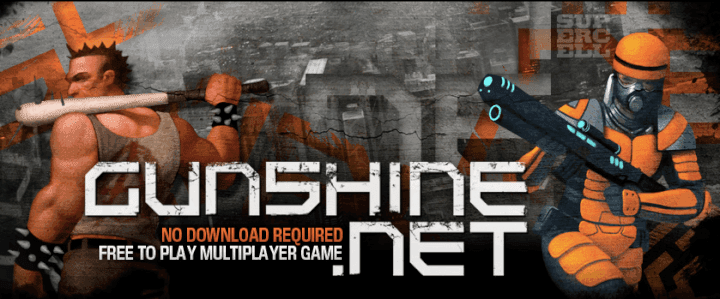
Supercell got together in a 30 sq. mt space in Espoo, Helsinki, and in a year's time launched Gunshine. With 500k active users, the massively multiplayer online role-playing game (MMORPG - gotta love gaming acronyms 😅) made for Facebook saw mild success 🟡. Retention numbers however painted a picture that contradicted with Supercell's principles (#3), and when this was combined with a renewed love for mobile (the age of the tablet, app store and touch screen had arrived) - the game was killed ☠️ - a move that would become a notorious norm at Supercell.
Today, Supercell is a $10B+ Tencent subsidiary (~84% stake with rumors of a complete buy-out) clocking $2.24B in annual revenue (2021) with an EBIDTA of $824M, from 5 super hit games - Clash of Clans (CoC), Clash Royale, Hay Day, Boom Beach and Brawl Stars! Behind the jaw-dropping revenue, downloads, DAU, MAU, and retention metrics of Clash of Clans and other Supercell games are inspiring product-led growth lessons for you and me. After all, gaming companies are the OGs of PLG! ❤️
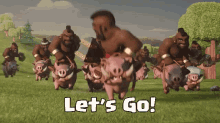
💕 Love at first sight
With cash flow surpluses in the millions, CoC and Supercell have invested astronomical amounts in performance marketing. Multichannel ads (beautifully crafted) targeted potential power users (whales) and retargeted churned users with scientific (pioneering at the time) marketing campaigns. Acquisition was also powered by:
App store optimization - coupled with positive reviews from players ensured that CoC ranked top 10 on both Android and IOS app
Content - Supercell created high fidelity content across mediums and promoted User Generated Content (UGC) on Twitch, Steam, Youtube, etc
Event and brand marketing - conferences, tournaments, a Superbowl ad
Carrier partnerships - a trade our founders mastered while working with fellow Finns at Nokia
Here's Liam Neeson's response to an attack on his CoC village. They played this at the Superbowl too. We'd stay away from his village 🥶
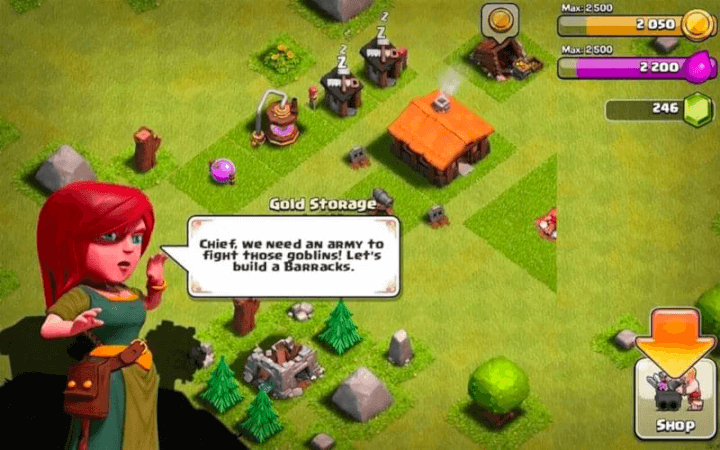
"Patience grasshopper": Another onboarding element that CoC and other Supercell games get critically right is the sequencing of tutorial flows and feature introductions. The complexities of a very deep and feature-rich game are abstracted as elements that are only relevant for experienced players and are hidden till the right pre-requisites are met. A good example is the Clan Castle in CoC which introduces a young player who has already figured out the basics of the game to enter the social gameplay realms of the game.
An approach that can effectively declutter first time experience for PLG self serve users elsewhere too!
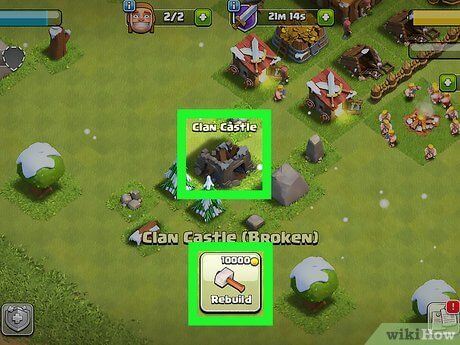
∞ Playing the long 'game'
“Retention, retention, retention. Not just early retention (you need to have that too), but always focus on the long term when developing new features for your game.”
The Supercell principle of "games that people will play for years" takes its root from the critical role of retention, and customer lifetime value on its business model. Successful companies in the gaming industry are those that can invoke strong loyalty and habit building amongst their players. Celebrating a decade in the market, its clear that Supercell made a game that people will play for years with Clash of Clans!
🔁 The Core Loop: The pillar of CoC's retention success is a Core Loop that rewards users every time they returned to the game.
Resources are mined with a capacity cap - Login, collect your bounty, and put your miners to work again. Every second post capacity is wasted gold/elixir 😥
Resources are consumed to construct buildings and train troops - You progress in the game by improving your base and your army. These activities are also capped by capacity.
Engage in battles to collect trophies, more resources, and progress through the game.
The core loop is further fueled using push notifications which act as a cue for logging in, the core loop activities are actions, and progress through the game is a reward. Measurable progress and clear-cut actions to get there create a flow state which results in habit building. This method is actively employed by Superhuman in driving their users towards inbox zero!

🧮 Measuring engagement: Supercell and the CoC cell track product usage information religiously to drive engagement and retention. Retention rates () at the end of 1, 7, and 30 days from activation are used to segment users into:
Newbies
Mid-range
and Elite
Each segment has different needs and is catered appropriately.
🏘 Join my clan - Social gameplay

Social gameplay via clan battles and leaderboards is another key component of the CoC player base. Players create their own clans, join existing ones, share resources, and battle with + for each other creating community behavior around the game. Collaborative buy-in from offline circles increases stickiness and also creates virality for customer acquisition.
Live services - Keep delivering value
Remember losing interest in Super Mario after you finally saved the princess? CoC live services team works to ensure that the product roadmap has fresh content, gameplay features and a new townhall upgrade before their elite group of users gets bored. Continued value delivery keeps the game exciting and becomes a moving goalpost for invested-elite users, reducing churn.
💰 $5B in lifetime revenue 🤯
Clash of Clans is a F2P (Free to Play) - P2W (Pay to Win) game. As the acronyms suggest, the game in itself is completely free with no gated features coming between an individual player and their game. This is very similar to the freemium pricing models of many of our favorite PLG companies. However, if a player wants to accelerate progress and skip the queue for training their dragon or building an archer tower, they can "Pay to Win"
⚙️ Money mechanics
Convenience currency 💎
As you progress in the game, the incremental resources and time required for hitting the next upgrade increases. A player can skip these queues by using Gems - a convenience currency that can be earned during the game or alternatively can be bought as an in-app purchase. Gems can replace gold and elixirs, and can also be used to skip waiting times. CoC's product brilliance introduces diamonds as a natural part of the game using giveaways and also by including them in the tutorial flows of the early days.While earned Gems create habits around using the convenience currency, super cheap introductory offers prompt users to make that first purchase!
"GGs!" exclaimed Arjun (self-plug) after buying a pack of 500 to cover for an upgrade that would have gone on for 48 more hours 😭

However, it's noteworthy that in Player 2 Player (P2P) battles that determine progress (# of 🏆's), the gems are of no avail, and the player level matching system ensures that only equally capable players compete.
2. Monetizing near misses
Clash of Clan 'attacks' are raids that can lead to an attacking player plundering your pile of gold and elixir. A 48-hour wait for harvesting the right amount of gold can go to naught in the event of a successful attack. A village is protected under a shield from more attacks past this, but a devastating raid can happen again the minute the shield goes away. This psychological monetization genius (it's not the game 🥺, it's the attacker 😡) creates urgency further fueling convenience currency purchases.
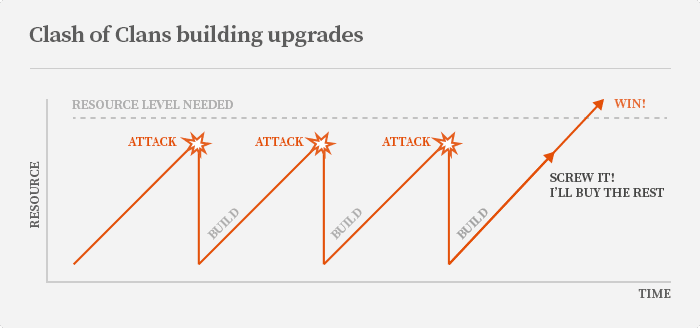
3. 🐋 Whale hunting
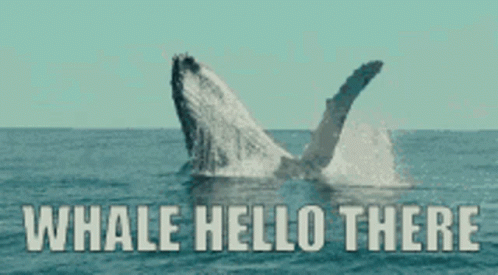
As one can guess, a large chunk of CoC revenue comes from Elite-loyal users for whom a leaderboard movement is a matter of pride. Elite users use purchases to beat the pack to new upgrades, defend their positions, and in some cases rush to the top without the 1-year+ ramp up.
🔬 Product usage-based nudges and notifications
As evident from the monetization mechanics of CoC, there are instances, and user segments that are more likely to make an in-app purchase than others. The right nudge (notification/discount/resource bundles) to the right user (a near-miss victim/ a whale user) at the right time can push users over the monetization fence. Product usage information is also used extensively to drive users across the acquisition, activation, and retention loops. Supercell powers these usage-based decisions with a team of data scientists and analysts. Some of their projects include:
Optimizing tutorial timing
Timing first monetization
Reward cycles for earned Gems
Whale prediction
Controlled sales/offers
Analyzing and operationalizing product usage data becomes a must-have when dealing with a large top-of-funnel of free users - an inevitable characteristic of product-led companies. Canva uses Toplyne to identify which of their millions of free users are the perfect fit for their premium subscriptions. (Self plug alert 🚨)
10 Learnings for PLG Companies
Here is a summary of learnings that we believe can be lifted and shifted to PLG Companies:
Have a killer onboarding process
Abstract away complicated features in the early adoption stage of the product
Create 'flow' by designing a habit loop for returning users
Retention is king - measure and segment users for retention rates
Community fuels engagement, retention, and virality
Never stop delivering value - enhance features, add workflows and create new categories if necessary
Freemium wins!
Monetize convenience
Identify and prioritize power (whale) users/accounts
Operationalizing product usage is a must-have across the AARRR funnel
The Hagenuk MT-2000. If those words mean anything to you, or better yet, sent a shiver down your spine, congratulations - you were witness to the dawn of an industry that is predicted to grow to a whopping $400 billion in the next five years - mobile gaming.
The Hagenuk shipped with a game (Tetris) pre-installed and became the first mobile phone ever to do so. Only '80s kids in Denmark will remember. Soon afterward, Nokia showed their teeth (fangs) and unleashed a beast that still roams the planet: Snake. Snake was included on every device Nokia has ever released, with about 400 million devices shipped with the game pre-installed as of 2016.

The introduction of accelerometers, capacitive touch, and multipoint sensing in the iPhone in 2007 saw the birth of such classics as Tap Tap Revenge and Trism. The number of mobile apps grew 200 times in two years after Steve Jobs unveiled the iPhone to the world. Moore's law played out before our very eyes as birds, both angry and flappy replaced the snake. Those among us who spent many a sleepless night on Flappy Bird only to clock a high score of 3 gave up soon after and found solace in Cut the Rope instead.
2010 was pivotal in the world of tech. The tides of the default SaaS go-to-market motion were slowly turning, as Candy Crush made the freemium model in mobile gaming widely popular. Meanwhile, not too far away from the birthplace of Snake in Espoo, Finland, a clan of 6 - Mikko Kodisoja and Ilkka Paananen, who had worked at another mobile game company before, along with four others they knew through work connections were just setting out to build the next big thing in the world of mobile gaming: Clash of Clans.
🥇 The best teams make the best games
Mobile gaming industry veterans Mikko and Ilkka had 3 core principles in mind when they rallied together a founding team for what they believed (they believed right) was the new way to build games -
The best teams make the best games
Small and independent cells
Games that people will play for years
“In 2010, we founded Supercell on the belief that creating great games is all about having the best people and providing them with the best possible environment to focus on developing the best games.” - Ilkka

Supercell got together in a 30 sq. mt space in Espoo, Helsinki, and in a year's time launched Gunshine. With 500k active users, the massively multiplayer online role-playing game (MMORPG - gotta love gaming acronyms 😅) made for Facebook saw mild success 🟡. Retention numbers however painted a picture that contradicted with Supercell's principles (#3), and when this was combined with a renewed love for mobile (the age of the tablet, app store and touch screen had arrived) - the game was killed ☠️ - a move that would become a notorious norm at Supercell.
Today, Supercell is a $10B+ Tencent subsidiary (~84% stake with rumors of a complete buy-out) clocking $2.24B in annual revenue (2021) with an EBIDTA of $824M, from 5 super hit games - Clash of Clans (CoC), Clash Royale, Hay Day, Boom Beach and Brawl Stars! Behind the jaw-dropping revenue, downloads, DAU, MAU, and retention metrics of Clash of Clans and other Supercell games are inspiring product-led growth lessons for you and me. After all, gaming companies are the OGs of PLG! ❤️

💕 Love at first sight
With cash flow surpluses in the millions, CoC and Supercell have invested astronomical amounts in performance marketing. Multichannel ads (beautifully crafted) targeted potential power users (whales) and retargeted churned users with scientific (pioneering at the time) marketing campaigns. Acquisition was also powered by:
App store optimization - coupled with positive reviews from players ensured that CoC ranked top 10 on both Android and IOS app
Content - Supercell created high fidelity content across mediums and promoted User Generated Content (UGC) on Twitch, Steam, Youtube, etc
Event and brand marketing - conferences, tournaments, a Superbowl ad
Carrier partnerships - a trade our founders mastered while working with fellow Finns at Nokia
Here's Liam Neeson's response to an attack on his CoC village. They played this at the Superbowl too. We'd stay away from his village 🥶

"Patience grasshopper": Another onboarding element that CoC and other Supercell games get critically right is the sequencing of tutorial flows and feature introductions. The complexities of a very deep and feature-rich game are abstracted as elements that are only relevant for experienced players and are hidden till the right pre-requisites are met. A good example is the Clan Castle in CoC which introduces a young player who has already figured out the basics of the game to enter the social gameplay realms of the game.
An approach that can effectively declutter first time experience for PLG self serve users elsewhere too!

∞ Playing the long 'game'
“Retention, retention, retention. Not just early retention (you need to have that too), but always focus on the long term when developing new features for your game.”
The Supercell principle of "games that people will play for years" takes its root from the critical role of retention, and customer lifetime value on its business model. Successful companies in the gaming industry are those that can invoke strong loyalty and habit building amongst their players. Celebrating a decade in the market, its clear that Supercell made a game that people will play for years with Clash of Clans!
🔁 The Core Loop: The pillar of CoC's retention success is a Core Loop that rewards users every time they returned to the game.
Resources are mined with a capacity cap - Login, collect your bounty, and put your miners to work again. Every second post capacity is wasted gold/elixir 😥
Resources are consumed to construct buildings and train troops - You progress in the game by improving your base and your army. These activities are also capped by capacity.
Engage in battles to collect trophies, more resources, and progress through the game.
The core loop is further fueled using push notifications which act as a cue for logging in, the core loop activities are actions, and progress through the game is a reward. Measurable progress and clear-cut actions to get there create a flow state which results in habit building. This method is actively employed by Superhuman in driving their users towards inbox zero!

🧮 Measuring engagement: Supercell and the CoC cell track product usage information religiously to drive engagement and retention. Retention rates () at the end of 1, 7, and 30 days from activation are used to segment users into:
Newbies
Mid-range
and Elite
Each segment has different needs and is catered appropriately.
🏘 Join my clan - Social gameplay

Social gameplay via clan battles and leaderboards is another key component of the CoC player base. Players create their own clans, join existing ones, share resources, and battle with + for each other creating community behavior around the game. Collaborative buy-in from offline circles increases stickiness and also creates virality for customer acquisition.
Live services - Keep delivering value
Remember losing interest in Super Mario after you finally saved the princess? CoC live services team works to ensure that the product roadmap has fresh content, gameplay features and a new townhall upgrade before their elite group of users gets bored. Continued value delivery keeps the game exciting and becomes a moving goalpost for invested-elite users, reducing churn.
💰 $5B in lifetime revenue 🤯
Clash of Clans is a F2P (Free to Play) - P2W (Pay to Win) game. As the acronyms suggest, the game in itself is completely free with no gated features coming between an individual player and their game. This is very similar to the freemium pricing models of many of our favorite PLG companies. However, if a player wants to accelerate progress and skip the queue for training their dragon or building an archer tower, they can "Pay to Win"
⚙️ Money mechanics
Convenience currency 💎
As you progress in the game, the incremental resources and time required for hitting the next upgrade increases. A player can skip these queues by using Gems - a convenience currency that can be earned during the game or alternatively can be bought as an in-app purchase. Gems can replace gold and elixirs, and can also be used to skip waiting times. CoC's product brilliance introduces diamonds as a natural part of the game using giveaways and also by including them in the tutorial flows of the early days.While earned Gems create habits around using the convenience currency, super cheap introductory offers prompt users to make that first purchase!
"GGs!" exclaimed Arjun (self-plug) after buying a pack of 500 to cover for an upgrade that would have gone on for 48 more hours 😭

However, it's noteworthy that in Player 2 Player (P2P) battles that determine progress (# of 🏆's), the gems are of no avail, and the player level matching system ensures that only equally capable players compete.
2. Monetizing near misses
Clash of Clan 'attacks' are raids that can lead to an attacking player plundering your pile of gold and elixir. A 48-hour wait for harvesting the right amount of gold can go to naught in the event of a successful attack. A village is protected under a shield from more attacks past this, but a devastating raid can happen again the minute the shield goes away. This psychological monetization genius (it's not the game 🥺, it's the attacker 😡) creates urgency further fueling convenience currency purchases.

3. 🐋 Whale hunting

As one can guess, a large chunk of CoC revenue comes from Elite-loyal users for whom a leaderboard movement is a matter of pride. Elite users use purchases to beat the pack to new upgrades, defend their positions, and in some cases rush to the top without the 1-year+ ramp up.
🔬 Product usage-based nudges and notifications
As evident from the monetization mechanics of CoC, there are instances, and user segments that are more likely to make an in-app purchase than others. The right nudge (notification/discount/resource bundles) to the right user (a near-miss victim/ a whale user) at the right time can push users over the monetization fence. Product usage information is also used extensively to drive users across the acquisition, activation, and retention loops. Supercell powers these usage-based decisions with a team of data scientists and analysts. Some of their projects include:
Optimizing tutorial timing
Timing first monetization
Reward cycles for earned Gems
Whale prediction
Controlled sales/offers
Analyzing and operationalizing product usage data becomes a must-have when dealing with a large top-of-funnel of free users - an inevitable characteristic of product-led companies. Canva uses Toplyne to identify which of their millions of free users are the perfect fit for their premium subscriptions. (Self plug alert 🚨)
10 Learnings for PLG Companies
Here is a summary of learnings that we believe can be lifted and shifted to PLG Companies:
Have a killer onboarding process
Abstract away complicated features in the early adoption stage of the product
Create 'flow' by designing a habit loop for returning users
Retention is king - measure and segment users for retention rates
Community fuels engagement, retention, and virality
Never stop delivering value - enhance features, add workflows and create new categories if necessary
Freemium wins!
Monetize convenience
Identify and prioritize power (whale) users/accounts
Operationalizing product usage is a must-have across the AARRR funnel
Related Articles




Behavioral Retargeting: A Game-Changer in the Cookieless Era
Unlock the power of behavioral retargeting for the cookieless future! Learn how it personalizes ads & boosts conversions. #behavioralretargeting




All of Toplyne's 40+ Badges in the G2 Spring Reports
Our customers awarded us 40+ badges in G2's Summer Report 2024.




Unlocking the Full Potential of Google PMax Campaigns: Mastering Audience Selection to Double Your ROAS
Copyright © Toplyne Labs PTE Ltd. 2024
Copyright © Toplyne Labs PTE Ltd. 2024
Copyright © Toplyne Labs PTE Ltd. 2024
Copyright © Toplyne Labs PTE Ltd. 2024